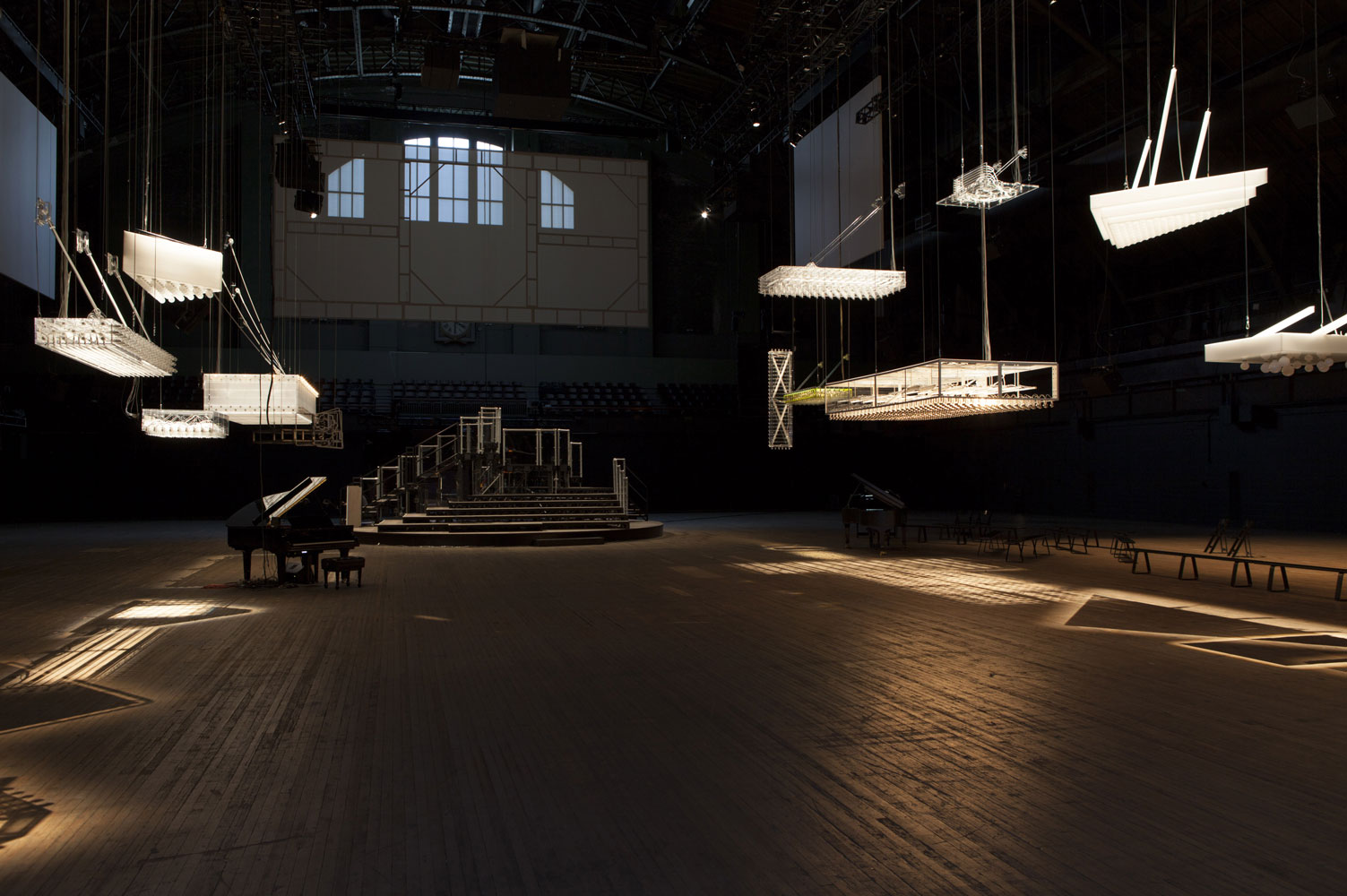The exhibition H {N)Y P N(Y} OSIS, which closed last week, was something of a love letter from the French artist Philippe Parreno to the city of New York. Inside the massive Park Avenue Armory’s Wade Thompson Drill Hall was a runway of 26 hanging marquee light-sculptures suspended like chandeliers illuminating the path down the aisle and into a cruciform of bleachers and screens—together the forming the ghost of a catholic cathedral. It would have been the exhibition of the summer, except that it is not an exhibition. Instead, it’s a constellation of interactive moments scripted together into what the Parreno calls a “time-score.” Time is essential to the artist in one of the most moving moments of H {N)Y P N(Y} OSIS, an oversized movie screen descends from the rafter above showing his film June 8, 1968. The film reenacts the train voyage that transported Robert Kennedy’s body from New York to Washington D.C. Even though we feel as if we are there, the film in centered on absence.
Parreno creates a seance of phantasmagoric immersion, which is encapsulated in Anywhere Out in the World. This is an ongoing piece where he bought the rights to a Manga character Annlee and collaborates with other artists to transform her. The artist Tino Seghal contributed to the exhibition by bringing Annlee to life as a child actress who enters the room and ask you directly, “Would you rather be too busy or not busy enough?” most people cautiously answer before she closes with the question ““What is the relation between sign and melancholia?” The film played in a two hour long loop, drawing us into the process of making a movie, only seeing the opening scene before the story begins. We are suspended inside the time of film between the title screen and the first dialog. In this way we never enter the drama, where we would have to suspend our disbelief. Parreno insists he never tells stories his films only reveal the truth. In the film Marilyn Parreno films the suite where Monroe stayed in the Waldorf Astoria, hearing every detail of the fountain pen writing, scratching and dripping across the hotel stationery. The film ends with the camera panning out enough to see that the room is a stage set, the voice is a machine mimicking Marilyn and the handwriting is an extraordinary robot that is the surrogate of her own writing. Parreno’s signature marquee sculptures point to a nostalgia of the golden age of American cinema, yet remain futuristic, he insists they mean nothing. “The search for personal liberty,” Parreno describes “ is becoming more and more synonymous with the quest for the non-narrative.”












